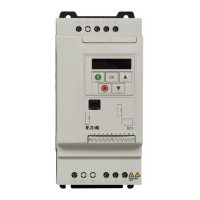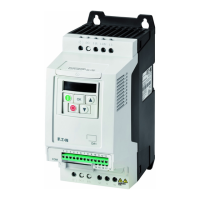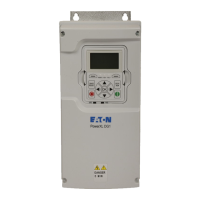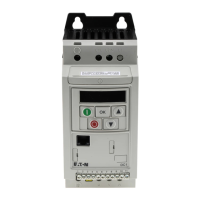6 Drives control
6.3 Motor
DC1 variable frequency drive 12/13 MN04020003Z-EN www.eaton.com 113
6.3.5 Speed behavior with slip compensation
In the control mode (V/Hz with slip compensation, P-10 > 0), the variable
frequency drive can compensate for fluctuations caused by the load's
characteristics. To do this, the internal motor model uses the measured
voltage and current values of the stator winding (u
1
, i
1
) to calculate the
required manipulated values for flux variable i
and torque variable i
w
. In the
three-phase motor's equivalent circuit diagram, the load-related slip is shown
as resistor R’
2
/s. During no-load operation, this resistance approaches
infinity, and approaches zero as the load increases.
Figure 68: Equivalent circuit diagram for an asynchronous motor
Stator winding
Air gap
Transformed rotor winding
An exact calculation requires the precise rating specifications of the
motor P-07, P-08, P-09). The speed control P-10 > 0) can then compensate
the load-related slip deviations.
The simple illustration shows that, as the load torque increases (), the
resulting speed reduction is compensated by an increase in the output
frequency () ( Figure 69).
Figure 69: Speed behavior with slip compensation

